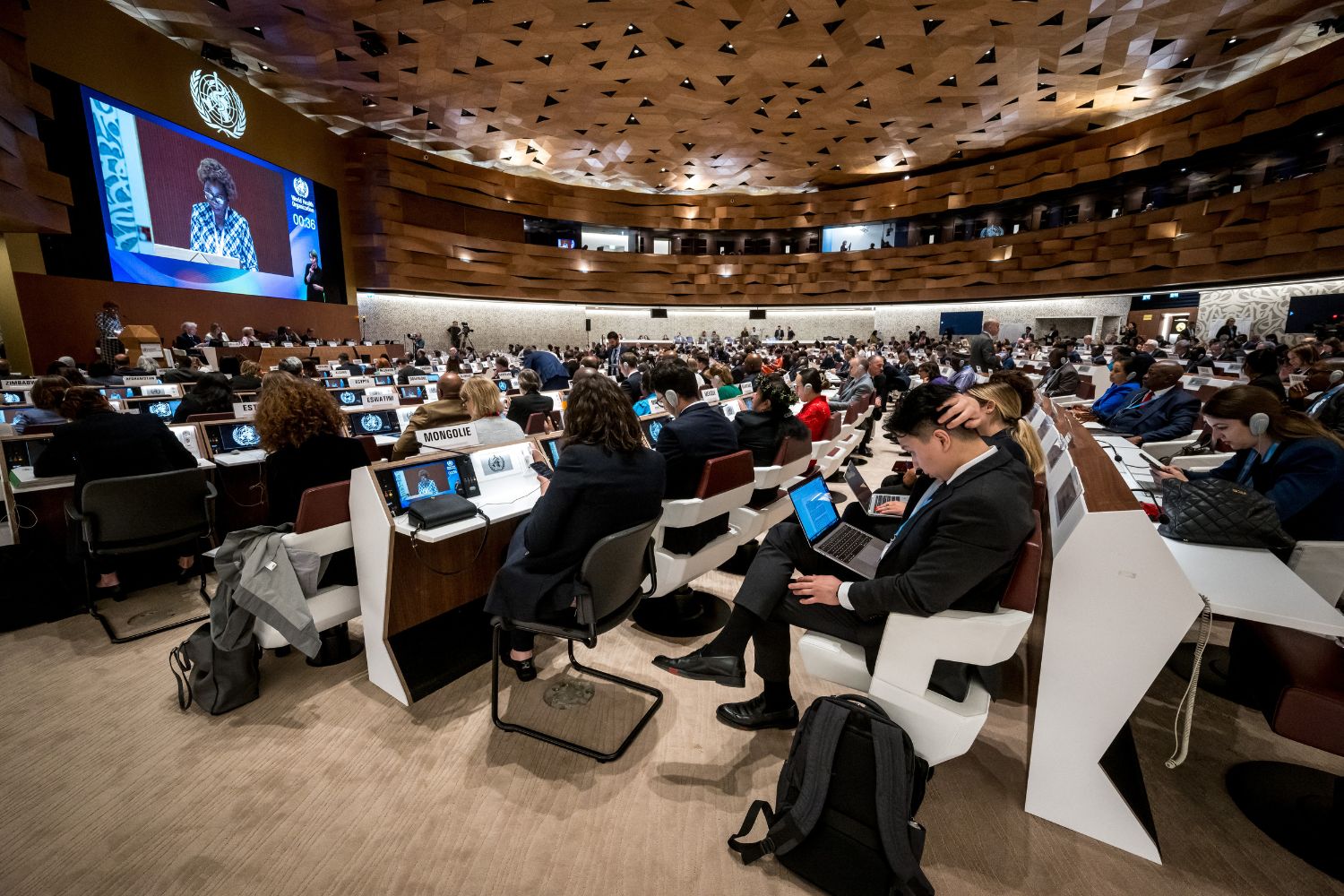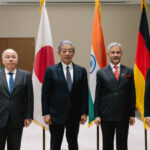India has highlighted its collaboration with BRICS countries on several key health initiatives during the BRICS Health Ministers’ Meeting, held on the sidelines of the 77th World Health Assembly in Geneva. The meeting served as a platform for discussing ongoing and future health collaborations amongst the BRICS nations (Brazil, Russia, India, China, and South Africa).
Union Health Secretary Apurva Chandra underscored India’s active engagement in BRICS health initiatives, emphasising collaborative efforts to advance joint health agendas and strengthen health systems across member nations. Chandra highlighted India’s contributions in nuclear medicine, radio-pharmaceutical science, and the development of advanced digital health solutions, noting the critical role these areas play in enhancing healthcare delivery.
A key point of discussion was the establishment of a BRICS integrated early warning system aimed at preventing mass infectious disease outbreaks, in alignment with international health regulations. India stressed the importance of adopting the ‘One Health’ approach, which promotes a unified effort in disease surveillance across human, animal, and environmental health sectors.
During its presidency, India virtually launched the BRICS Vaccine Research and Development Centre, appointing the Indian Council of Medical Research-National Institute of Virology (ICMR-NIV) as the coordinating agency. ICMR-NIV, along with partner institutes, is progressing with phase-3 clinical trials of a recombinant dengue vaccine and conducting research on locally endemic diseases such as Kyasanur Forest Disease, Nipah virus, HPV, MTBVAC, and influenza.
India also expressed its alignment with the upcoming BRICS conference agenda on antimicrobial resistance (AMR), recognising it as a significant global challenge. India’s national action plan on AMR, launched in 2017, focusses on cross-sectoral collaboration and adheres to the ‘One Health’ approach, mirroring the WHO’s Global Action Plan on AMR.
This collaborative spirit reflects India’s commitment to working closely with BRICS countries to tackle pressing health challenges and enhance the overall health infrastructure within these nations.
Current Situation of Indian Healthcare
1. Infrastructure and Access:
– Public Healthcare: India has a tiered public healthcare system, with primary health centres (PHCs) at the village level, community health centres (CHCs) at the block level, and district hospitals at the district level. However, these facilities are often underfunded and understaffed.
– Private Healthcare: The private sector plays a significant role, providing 70% of healthcare services. However, it is expensive and often inaccessible to the poorer segments of the population.
2. Disease Burden:
– Communicable Diseases: India continues to battle communicable diseases like tuberculosis, malaria, and HIV/AIDS. The COVID-19 pandemic has also put immense pressure on the healthcare system.
– Non-Communicable Diseases (NCDs): There is a growing burden of NCDs such as diabetes, cardiovascular diseases, and cancers, partly due to lifestyle changes and urbanisation.
3. Health Workforce:
– India faces a shortage of healthcare professionals, including doctors, nurses, and allied health workers. Rural areas are particularly underserved.
4. Health Financing:
– Out-of-pocket expenditure is high, with many people unable to afford medical treatment. The public health expenditure remains low at around 1.5% of GDP, although efforts are being made to increase this.
5. Technological Integration:
– There has been a significant increase in the use of telemedicine and digital health solutions, especially accelerated by the COVID-19 pandemic. Initiatives like the National Digital Health Mission (NDHM) aim to create a digital health ecosystem.
Future Plans and Initiatives
1. Ayushman Bharat:
– Pradhan Mantri Jan Arogya Yojana (PM-JAY): This is the world’s largest government-funded health insurance scheme, providing coverage of up to INR 5 lakh per family per year for secondary and tertiary care hospitalisation.
– Health and Wellness Centers (HWCs): The goal is to transform 150,000 sub-centers and PHCs into HWCs to provide comprehensive primary healthcare, including preventive and promotive services.
2. National Health Mission (NHM):
– The NHM, encompassing the National Rural Health Mission (NRHM) and National Urban Health Mission (NUHM), aims to strengthen health systems, particularly in rural and urban underserved areas.
3. Digital Health Initiatives:
– National Digital Health Mission (NDHM): This initiative aims to digitise health records, provide a unique health ID for every citizen, and ensure a robust digital health infrastructure.
4. Strengthening Healthcare Infrastructure:
– The government plans to increase public health expenditure to 2.5% of GDP by 2025, focusing on improving infrastructure, equipment, and human resources in public health facilities.
5. Research and Development:
– Emphasis on indigenous research, particularly in vaccine development and treatment for endemic diseases. The establishment of institutions like the BRICS Vaccine Research and Development Centre aims to bolster these efforts.
6. Addressing Non-Communicable Diseases:
– National programs targeting NCDs, including the National Program for Prevention and Control of Cancer, Diabetes, Cardiovascular Diseases, and Stroke (NPCDCS), aim to reduce the burden of these diseases through early detection and management.
7. Tackling Antimicrobial Resistance (AMR):
– Implementation of the National Action Plan on AMR, which includes awareness campaigns, better infection control, and promotion of rational use of antibiotics.
8. Improving Medical Education:
– Efforts to increase the number of medical colleges and seats, enhance the quality of medical education, and ensure equitable distribution of healthcare professionals.
9. Universal Health Coverage (UHC):
– Continued efforts to achieve UHC by ensuring that all individuals and communities receive the health services they need without suffering financial hardship.
By addressing these areas, India aims to build a more robust and inclusive healthcare system, capable of meeting the needs of its diverse population and adapting to future health challenges.













